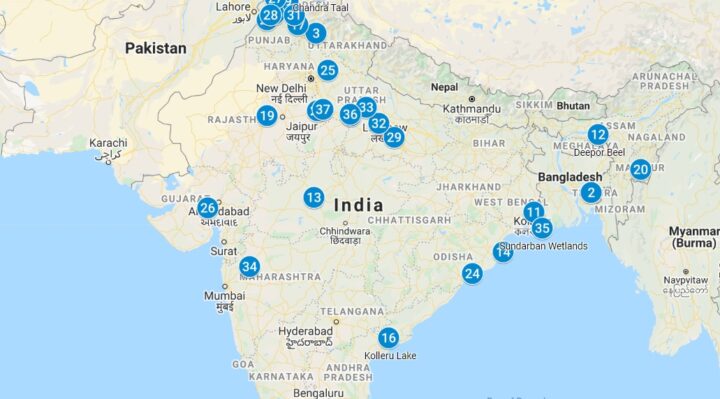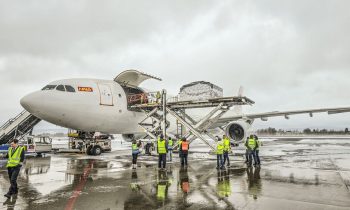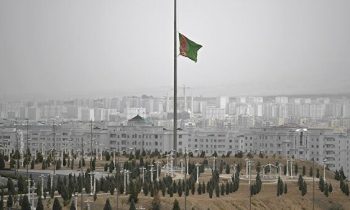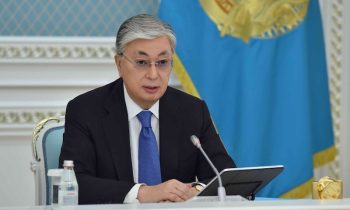India has been restoring several ancient temples and monuments across South-East Asian countries as a part of its development partnership initiatives. The recent conservation projects of the Ministry of External Affairs in collaboration with the Archaeological Survey of India and partner countries has brought forth a rich cultural heritage.
The Southern Asiatic region has been historically heralded as Suvrnabhumi, or the golden land, in ancient Indian literature a title that is true for the immense wealth and more importantly for a vibrant and friendly mix of cultures that is evident in ancient monuments across the countries in this region. India has had an important role to play in preserving this shared cultural heritage.

The recent discovery of a 9th-century monolithic sandstone Shiv Lingam (representation of Lord Shiva) was made by Archeological Survey of India (ASI) during the ongoing conservation project at Cham Temple Complex, a part of the UNESCO world heritage site, in the Quang Nam province of Vietnam. The project, part of the India’s development partnership with Vietnam though conservation of shared heritage, is being supported by the Ministry of External Affairs (MEA), Government of India. India has been actively involved in large-scale restoration and conservation projects which have reaffirmed the existence of strong cultural connection that thrived throughout the region in ancient times.
The conservation work of ASI is being carried out at several heritage sites beyond the national boundaries. India has been at the forefront of restoring heritage sites across South-East Asia, be it the Angkor Wat temples in Cambodia or the My Son monuments in Vietnam. These initiatives can be attributed to the country’s policy of promoting a healthy and mutually beneficial diplomatic outreach and bringing numerous facets of Indian cultural and civilizational heritage to the public at large.
The projects, funded by the MEA with ASI acting as the execution agency, have reaffirmed the ancient albeit strong connections across Southern Asia. Here are a some of large-scale undertakings:
Angkor Wat, Cambodia
Also known as funan in the ancient texts of India, this city reached its zenith under the leadership of Jayavarmana II. With the beliefs of Vaishnavism, Saivism and Mahayana Buddhism, the prominent archaeological site of Angkor Wat was built by king Suryavaramana II in the 12th century. It consists of magnificent temples dedicated to Lord Shiva, Vishnu and Brahma. The MEA with the ASI undertook its conservation on a grand scale in collaboration with the Government of Cambodia and have made tremendous efforts to preserve the beauty of these temples. In fact, in 1980, India was the first country to respond to an appeal made by Cambodia to the world community to come forward to help save the Angkor Wat, the centre of the Khmer kingdom for several centuries. The ASI team worked for seven years at the complex, restoring the northern embankment of a moat, a gateway, the grand Samudra Manthana Gallery, the northern library and the central tower of the Angkor Wat temple among other sections. The temples’ extraordinary bas reliefs, decorated panels of folklore and notable iconography have been restored to their former prime.
Ta Prohm Temple, Cambodia
After Angkor Wat, ASI started restoration of the Ta Prohm temple located in the Angkor World Heritage Site. The temple of Ta Prohm was built by King Suryavaramana VII and is an epicentre of the teachings of Mahayana Buddhism. This particular temple is an ancient monastery and a university, this rajvihara (royal residence) was built by the king in memory of his beloved mother. With the passage of time, Ta Prohm encountered extensive growth of trees and bushes, which grew haphazardly threatening the original structure. The temple was also littered with excessive boulders and mounds that needed removal to form a clear passageway. The conservation project was taken partly under the expertise of ASI permitted by International Coordination Committee and Authority For The Protection And Management Of Angkor And The Region Of Siem Reap (APSARA). The ancient walls adorning the magnificent motifs of Buddhist beliefs and Bodhisattvas are in process of being restored to their original quality.
Ananda temple, Myanmar
The Ananda temple of Myanmar is considered to be one of the most beautiful temples preaching the teachings of Theravada Buddhism. Built by King Kyansittha of Pagan dynasty, this elegant pagoda style temple is an exquisite example of Mon architecture and houses four colossal figures of Lord Buddha. The wall plaques portray his early life forms, the jatakas and their enigmatic stories. The region was devastated by intense seismic activity and the temple frequently requires structural and chemical restoration. The ASI and the MEA with the local authorities of Bagan have taken the restoration responsibilities.
Vat Phou Temple, Laos
India shares a strong relationship with the Lao People’s Democratic Republic. The ASI has undertaken the project to restore Laos’ temple of Vat Phou. An ancient structure dating back to the 11th and 13th century, part of an important city of the Khmer empire, this temple is dedicated to Lord Shiva, which later was transformed into a Buddhist centre. The ASI has been working on structural and drainage analysis, restoration as well as documentation that needs to be done for the restoration work of the temple.
The Prime Minister of India Narendra Modi also highlighted India’s historic and cultural links with Laos and expressed satisfaction at being involved in the restoration of the World Heritage Site at Vat Phou over a telephonic conversation with Dr Thongloun Sisoulith, Prime Minister of Laos in June this year.
My Son Temple, Vietnam
One of the most prominent temples dedicated to the Bhadreswar form of Lord Shiva, this one-of-a-kind monument and its subsidiary shrines were constructed by the kings of Champa dynasty between the 4th and 14th century.
Archaeological Survey of India has been successfully carrying forward with the conservation work to restore this temple premises. An MoU has been signed between the two countries and with the MEA’s support. Currently, the restoration covers three prominent temple groups falling within the complex.
Nepal, Indonesia and Sri Lanka
The ASI has been actively involved in the conservation of the Pashupatinath temple in Nepal; the Borobudur temple in Indonesia and the Thirukuteeshwara temple in Sri Lanka. Under ASI’s skillful expertise these temples are being conserved with immense care to their former glory.
As ASI’s experts keep restoring these ancient structures, not only is history being preserved but it is also aiding bilateral relations. It is showing how this cross-pollination of various culturally impacted beliefs, customs and rituals has become an integral part of India’s vision to promote global peace and prosperity. The ideology of Vasudhaiva Kutumbakam (the world is one family) seems fairly appropriate as these conservation projects have helped us take a united stand on a global platform, which is only growing stronger with time.
Conservation projects over the years
Bahrain
A team of ASI archaeologists excavated burial mounds in Bahrain in 1983. It excavated 70 graves, six Indus seals and a circular steatite seal with Indus script.
Angola
An ASI team restored and reorganised the Museum of the Armed Forces located inside the 17th century fortress of Sao Miguel in Luanda in 1988-89.
Nepal
In the early 1960s, ASI teams excavated Buddhist archaeological sites in Sidharthanagar, Kapilvastu, Tilaurakot and Lumbini. In the same decade, another team carried out an iconographical survey to discover rare images like Shiva as Ekpada-Trimurti, Chandra riding on a chariot of geese, Mahesha-samhara, etc.
AfgHanistan
The ASI conserved and restored the 6th century Buddhas of Bamiyan and the 15th century mosque at Balkh of Sufi leader Khwaja Abu Nasr Parsa in the 1960s and explored Harappan, Buddhist and Asokan sites.
Maldives
ASI teams have excavated sites in Kuramathi, Todd and Nilandhe atolls that revealed Buddhist traits.
Bhutan
The ASI teams carried out preservation of murals of Do de Drak, Nekhang-Lhakhange and Mithragpe-Lhakhang of Tongsa Dzong in the late 1980s.
Egypt
In the early 1960s, an ASI team visited Nubia to explore, excavate and salvage any ancient artefacts around Afyeh and Tumus and discovered middle and late stone age tools in the process.
About the Author
Juhi Mirza holds a master’s degree in Archaeology and is a keen enthusiast for all things ancient. The Lucknow-based writer has a deep interest in cultures and traditions of India and the world. She has travelled extensively to document ancient ruins and cultures across the world



